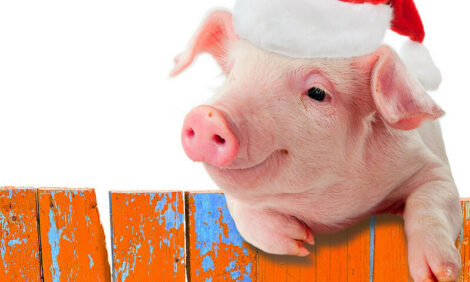



Pork Commentary: Road Trip to Thailand & India
THAILAND & INDIA - "The odyssey continued last week, not quite Jason and the Argonauts but we are covering a lot of ground. As you probably read in previous commentaries we have travelled one week Russia, one week China, this past week Thailand and India," writes Jim Long in this week's Pork Commentary.Our observations:
- Thailand has a hot and humid climate. The people are quite pleasant and very polite.
- Bangkok is everything you have ever heard about. We would be surprised if there were any middle aged white men left in Europe currently. It must be a European tradition to travel without your wife. Just an observation but we are not cultural experts.
- My 14-year-old son who has been on the odyssey was quite quick to observe, "Bangkok is a lot different than where we live." He is a quick study.
- Thailand has about one million sows and the price of market hogs is about 85 Baht (THB) a kilogram live weight or about US$2.25 a kilo (US$1.00 ive weight a pound). Producers told us current market hog prices are the highest in history. Profits per head are about $100.
- We had a meeting with Government officials and several producers who collectively made up about 30 per cent of Thailand’s sow herd.
- Feed prices are similar to USA. Thailand produces about 80 per cent of its corn needs. Soybean meal is imported.
- We were told Thailand hog prices are record high because of low hog prices in the past couple years and what they called 'Chinese PRRS'. The PRRS that we wrote about last week in China got to Thailand. Lots of abortions and dead pigs, it reminds us of a few years ago when Larry Pope (now CEO of Smithfield Foods) spoke at the National Pork Industry Conference and basically said that PRRS is the producer’s friend: it cuts supply and increases prices. People were somewhat shocked at what Mr Pope said but it has some real logical merit. Then again, you do not get to be CEO of the world’s largest pork company by being unable to do your own thinking.
- Our impression of Thailand is that its production base is more technical and consolidated than China. The percentage of backyard pigs is significantly less than China’s. About 100 entities make up the bulk of Thailand’s industry, almost all family-owned.
- Producers in Thailand prefer Duroc-, Yorkshire- and Landrace-based genetics. Synthetic lines with Pietrans have proven to be too disease-susceptible and too slow growing. The climate where 20° C. or 68° F. is the lowest recorded temperature puts a significant premium on genetics with appetite and disease resistance.
- Thai producers do not get paid by grades on hogs directly but fat pigs get discounted.
Summary
Thailand is a fascinating country with a relatively mature swine production base. Like many other countries in the world, they have these highest prices and profits in history. The producers we talked to were all veterans of the 'pig wars'. As one said, "We know it won’t last, we got to get ready for the next downturn." Sounds like home!
India
We had a quick stop in India. India’s swine industry is small. Official statistics are limited. Like other parts of the world, as people's disposable income increases so does demand for meat. Many Indians are vegetarians because of lack of income for meat, not necessarily for religious reasons.
We were stimulated for our visit by project development by South East Asian associates of Genesus that look at investing. We expect outside expertise for India because of proximity and business ties.
One interesting aspect of India is that no grain can be exported so feed prices are relatively insulated. Current feed grain stocks in India due to the ban on exports are 61 million tonnes - a level challenging grain storage facilities.
India like other countries wants meat and poultry. For India, with over one billion people, a little bit per capita of pork is a lot. We see current project developments as a pebble in an ocean.
Summary
The odyssey is almost over. We are writing this in Indira Gandhi International Airport, New Delhi India. It is a big world; we will have gone around by the time we get home. Take home message: hog producers are good people in every country. My final thoughts as I listen to flights being called for Kabul and Kandahar, Afghanistan: not only is there no pork on these flights but as Dorothy said in 'The Wizard of Oz', "There is no place like home."








